The Ultimate Guide to Website Pricing in NZ (2025 Edition)
Wondering what a website costs in NZ? This 2025 guide breaks down pricing, value, hidden costs & ROI – from $500 to $50K+. No fluff, just facts.

Website Pricing in New Zealand is Broken. Let’s Fix That.
Let’s be honest – most people have no idea what the cost of a website design in NZ is!
Ask around and you’ll hear numbers ranging from $500 to $50,000+ depending on who you talk to. You’ll find web agencies that refuse to publish pricing. Others give vague estimates. And some throw out packages without even asking about your goals.
No wonder business owners feel frustrated, confused, and sometimes burned.
We believe in clarity instead of guesswork. Website pricing should make sense – not feel like pulling numbers out of a hat. That’s why we’ve put together this no-fluff, brutally honest breakdown of what websites actually cost in NZ in 2025 – and why.
Now before we dive into the “why” behind those numbers (because this is a big article!), let’s answer the question everyone’s asking first:
Website Costs in New Zealand (2025 Pricing Guide)
Here’s what real website pricing looks like in NZ this year – from small business sites to full custom builds.
TLDR Pricing Table: Type of Website, Typical Website Price Range NZ, & Who It’s For
- One-Pager / Landing Page: $500 to $3,000 – For solo operators, events, basic online presence setups
- Small Business Website Cost NZ: $3,000 to $7,000 – For tradies, service providers, startups
- Medium Custom Website: $7,000 to $20,000 – For growing businesses, agencies, professionals
- eCommerce Website Cost NZ: $10,000 to $50,000+ – For a range of business sizes, eCommerce can be quite complex
- Advanced / Custom Build: $20,000 to $50,000+ – For enterprises, eCommerce online stores, SaaS, gov projects
Let’s break that down…
One-Pager / Landing Web Page ($500 – $3,000)
This is the minimum viable online presence. It usually includes a scrollable homepage with contact info, an about section, and a form. Sometimes it includes services or products, but not with great depth of information!
Common features:
- Website Template-based design
- Basic copywriting or DIY content
- Simple contact form or calendar integration
- Mobile-friendly layout for mobile devices
Ideal for:
Event pages, product launches, or businesses just starting out. It’s a quick and cheap solution to getting your business or offer online.
But be warned: These are often DIY and the trade-off is limited flexibility, speed, and scalability.
Small Business Website NZ ($3,000 – $7,000)
This tier is where you start getting a tad more serious. Potentially some custom design touches, a CMS you can edit, and optimised pages built with users and search engines in mind.
Common features:
- 3-7 page layout (For example, Home, About, Services, Contact, Blog pages)
- Mobile responsive design
- On-page SEO fundamentals
- CMS access with website editable fields
- Simple integrations (booking forms, maps, etc.)
Best for:
Tradies, local services, consultants, creatives, and early-stage brands who want to look professional and rank locally.
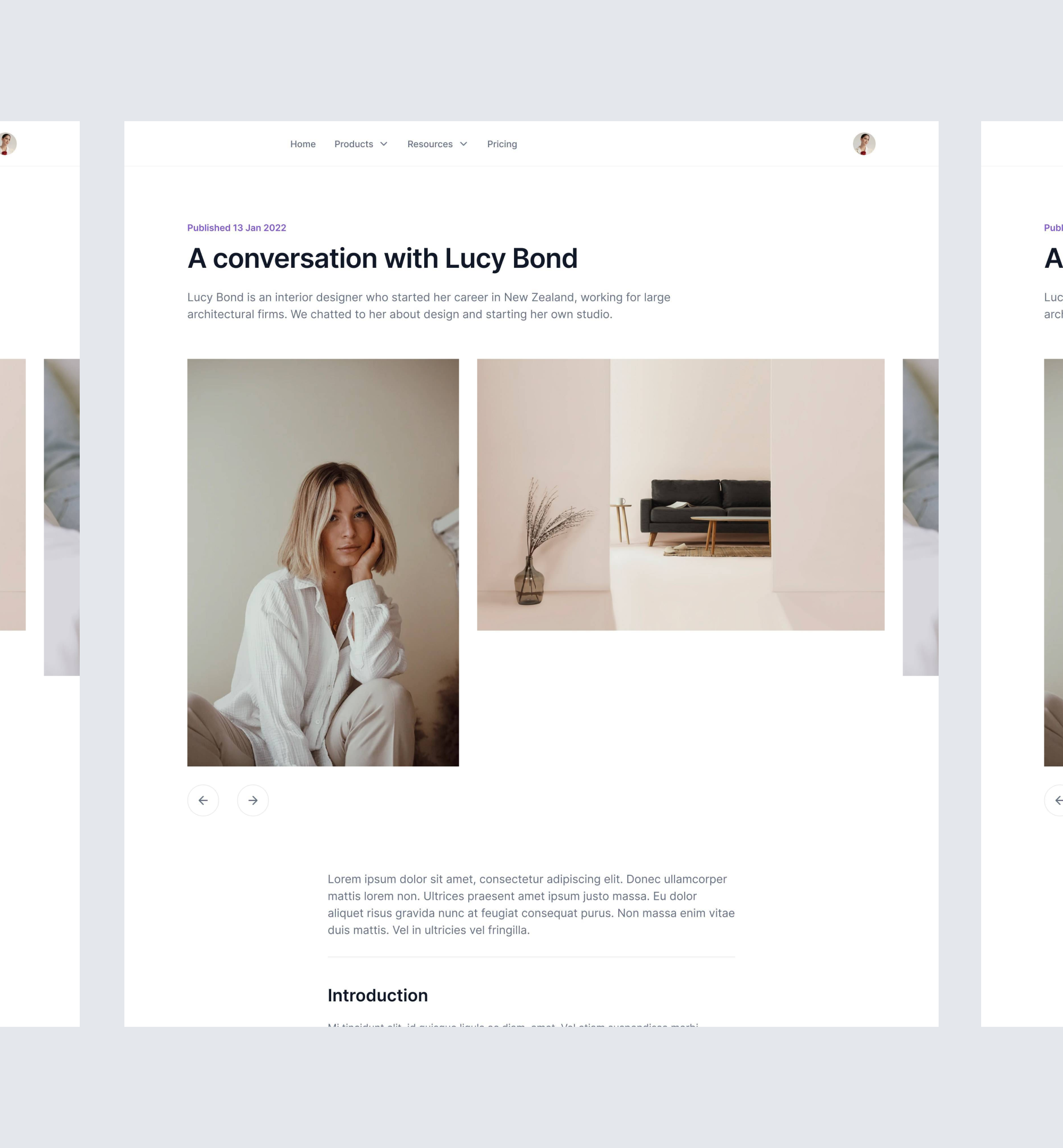
Medium Custom Website Cost NZ ($7,000 – $20,000)
Now you’re into fully tailored territory. These sites are created to perform – not just look good. Generally built and designed from the ground up!
Common features:
- Custom UI/UX design
- Strategic wireframes and sitemap planning
- Advanced functionality (e.g. blog filtering, gated content, dynamic content blocks)
- Copywriting and conversion-focused content
- Performance optimisation
- SEO best practices
- CRM/email marketing integrations
Ideal for:
Established service businesses, accountants, law firms, agencies, and high-growth companies who want a website that supports sales, branding, and operations.
Advanced / Custom Web Design NZ Pricing ($20,000 – $50,000+)
This is where enterprise-level strategy meets powerful performance. Built from the ground up – custom frameworks, headless CMS, complex integrations, and scalability built in.
Common features:
- Built on frameworks (like Next.js) with custom frontend/backend
- Headless CMS (e.g. Payload, Strapi, Sanity)
- eCommerce (Shopify, Magento, WooCommerce)
- High-level UX design & animations
- Interactive components
- API integrations
- Accessibility compliance
- Ongoing development roadmap
For:
SaaS companies, property developers, multi-location franchises, government bodies, medium to large scale businesses, and serious ecommerce brands ready to scale.
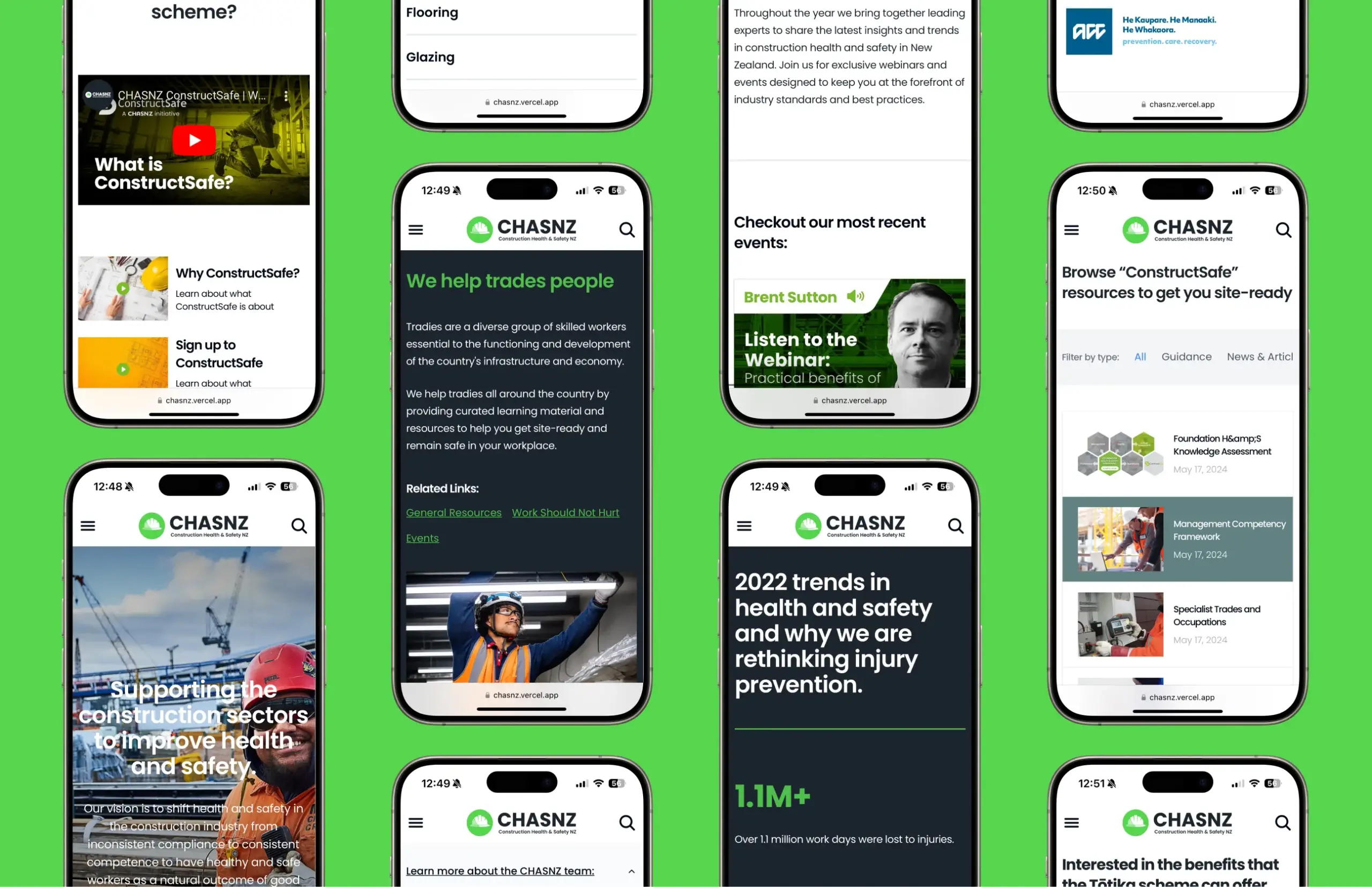
Notable Add-Ons That Affect Price (And Are Often Skipped)
- SEO copywriting & content strategy: $1,000-$5,000+ (SEO can be an on-going cost)
- CRM/email integrations: $500-$2,500+
- Booking/payments systems: $1,000-$4,000+
- Branding/logo design: $1,000-$3,000+
- Multilingual capability: $2,000-$10,000+
Final Word on Pricing
The biggest variable in website pricing? Scope, Complexity and strategy. A website without a clear goal is expensive, no matter the price. A well-planned website with a purpose? That’s an investment.
Next, we’ll explain why prices vary this much – and how to make sure you’re not overpaying (or underinvesting).
What Impacts Website Design Pricing in NZ?
So, you’ve seen the price brackets – but what actually determines where your website lands on that scale?
Spoiler: it’s not just about “how many pages” you have. It’s about how those pages function, what sits behind them, and what your website is meant to do for your business.
Let’s break down the key factors that shape website costs in New Zealand:
Functionality & Features
A contact form is one thing. A full booking engine with calendar syncing, automated emails, and multi-user permissions? That’s another ballpark.
Feature Examples That Add Cost:
- Event bookings or calendar integrations
- Member-only logins or gated content
- Product filtering & sorting
- API integrations with CRMs or apps
- Custom calculators or quote builders
- Live chat or chatbot tools
- Multilingual capabilities
The Rule: The more your site does, the more complex the build. It’s not just about aesthetics – it’s the tech underneath.
Custom vs Template Website Design
Templates save time and budget. But if you’re aiming to stand out, convert more leads, or build a premium brand presence, custom design is worth the investment.
The Design Approach, Cost Range, and Who They’re Ideal For:
- Pre-built template: Lower Cost – For startups, temporary sites, solo operators, events, basic online presence setups
- Template + Custom mix: Moderate Cost – For small businesses with moderate needs
- Full custom design: Higher Cost – For established brands, UX-focused site
Why it matters:
Design isn’t just about looking slick – it’s about how users feel when they land on your website. A custom-designed site is built for your brand, your customers, and your goals. It’s optimised for trust, performance, and conversion.
Templates: Faster and cheaper, but often generic and restrictive. Great for quick launches or MVPs.
Custom design: Built from the ground up to communicate your value, improve usability, and differentiate you in a competitive market.
Outcome: Stand out, build trust, and guide users more effectively from click to conversion.Custom Design vs Templates
With understanding the market and positions of different businesses or ideas, we offer both template-driven design and full UX/UI design, depending on your budget and goals. Want to find out more about what’s right for you? Check out our article here.
Strategy, UX & Content Planning
This is where cheap websites fall short. If there’s no strategic thought behind what pages you need, how users move through your site, or what content converts, the final product might look nice – but underperform.
Strategic work includes:
- Clear site architecture and navigation
- Conversion journey mapping
- Wireframes that plan each page’s flow
- Content goals for each page (what actions you want users to take)
- SEO keyword research
- User flow testing
Why it matters:
Without strategy you’re building a website with no direction. UX planning ensures the layout, content, and calls-to-action are placed exactly where users expect them – improving time on site, reducing bounce rate, and increasing leads. This is the difference between a brochure site and a business tool.
Outcome: A strategic website increases engagement, encourages conversions, and gets better long-term SEO results.
Mobile Experience – Responsive Web Design
In 2025, over 70% of users in NZ will interact with your site on mobile. If your site isn’t mobile-first (not just mobile-friendly), you’re leaving leads on the table.
Mobile development includes:
- Responsive layouts for all screens
- Speed and touch-optimisation
- Mobile-first design prioritisation
- Accessibility features (for tap targets, font sizing etc.)
Why it matters:
A bad mobile experience means lost sales. Slow load times, buttons that are too small, and confusing layouts frustrate users and send them straight to your competitors.
A mobile-first website doesn’t just shrink the desktop version – it’s designed specifically for mobile use, with performance, layout, and usability in mind.
Tip: Always test your site on mobile before launch – not after.
Outcome: A great mobile experience means higher conversions, better SEO rankings, and more visibility to your audience.

CMS Platform
The platform you build your site on affects how it’s managed, how it scales, and how secure it is. Common CMS Options in NZ:
- WordPress – most common and most flexible for SMEs. Great for SEO, content, and blog-driven sites.
- Headless CMS New Zealand (e.g. Sanity, Payload, Strapi) – Fast, future-proof, ideal for custom development and high-speed performance.
- Shopify / WooCommerce – Best for eCommerce builds
- Joomla, Drupal, Magento – used but increasingly niche
- Wix/Webflow – Easy to use but can limit scalability and performance.
What we use at Builtflat:
We tailor our stack to your business – from template builds to full custom frameworks using Next.js, React, Tailwind, and headless CMS setups to name a few. Luckily we cover a huge range of disciplines to offer businesses the best suited CMS for them!
Why it matters:
Not all CMSs are equal. Some are better for blogging, others for eCommerce, and some give total freedom with custom builds. The wrong choice can lead to bloated code, slow speed, poor SEO, and higher long-term costs.
Copywriting & Content Creation
You’d be surprised how many builds stall because “the client is still writing the content.” Professional content can make or break a site. It’s not just about spelling and grammar – it’s about tone, SEO, structure, and conversion.
Content services that affect pricing:
- Brand messaging & tone of voice
- Page copywriting (Home, About, Services, etc.)
- Blog strategy & SEO writing
- Case studies or lead magnets
- Visual content: image sourcing, video editing
- Lead magnets or guides
Why it matters:
Design gets attention. Copy converts. The right words in the right place can mean the difference between a passive visit and a booked client.
Outcome: Great content increases engagement, improves SEO, and builds trust – even before a user hits “Contact”.
SEO Setup (On-page, Technical, Local)
Search engine optimisation isn’t something you “add on later” – not if you want to rank. SEO helps your websites visibility, because if it isn’t found on Google it’s like building a shop in the middle of the desert.
SEO elements that impact scope/cost:
- Keyword mapping
- Meta titles/descriptions
- Heading structure (H1, H2, etc.)
- Image alt tags
- Internal linking
- Schema markup
- Local SEO setup (Google Business Profile etc.)
Why it matters:
Most users never scroll past page one. Technical SEO and on-page optimisation are essential to give your site the best chance of ranking, and being seen by the right audience.
Outcome: More traffic, better visibility, and long-term compounding growth in leads – without constantly paying for ads.
Pro Tip: Ask your web agency how they implement SEO – not just if they include it.

Ongoing Website Costs: Support, Hosting & Maintenance
The build is just the beginning. Your site needs ongoing support to stay fast, secure, and live. This is the “ongoing cost” part that most people forget – until something breaks.
Ongoing support costs include:
- Hosting (CDN servers, performance monitoring)
- Domain renewals
- Plugin & CMS updates
- Uptime monitoring
- Post-launch tweaks & edits
Why it matters:
Websites need updates, fixes, speed improvements, security patches, and sometimes fresh content. Skipping maintenance is the fastest path to a hacked, broken, or painfully slow site.
Outcome: Peace of mind knowing your website is protected, updated, and performing at its best around the clock.
Why This All Matters
If you’re comparing two website quotes in NZ and one is twice the price, chances are one includes all of the above, and the other doesn’t. The cost of your website reflects how capable it is. It’s not about how many pages you have. It’s about what your website can do, how it’s designed, and how well it’s set up to help your business grow.
Affordable Websites in NZ – Value Without Cutting Corners
Let’s clear something up:
There’s a big difference between a cheap website and an affordable one.
Cheap websites are built fast, sold faster, and almost always come with trade-offs. They might look okay on the surface, but underneath, they’re often bloated, outdated, and limited in performance. You’ll likely outgrow it or regret it within a year.
Affordable websites, on the other hand, are strategically built to maximise value. They’re cost-effective, scalable, and designed with your goals in mind.
Cheap vs Affordable — What’s the Real Difference?
Cheap: Build quality is rushed and will use generic, reproduced templates. The performance is super slow, buggy, and not mobile optimised. It’ll have minimal features, perhaps not suited to your business, and breaks easily.
Theres next to none SEO, or whats there is outdated. Scalability? Forget it! Want support? Sorry this is a one-off transaction.. See where I’m going here!
Affordable: Professionally designed with branding in mind. Fast, mobile-first design, and Google friendly. It focuses on your business goals with appropriate features.
It has modern SEO structure built in and is built to grow with your business. There’s a range of support options included and the ROI is great!
What “Affordable” Should Actually Mean
We believe affordable means:
- Tailored to your goals and brand (not cookie-cutter)
- Scalable for future features, content, or pages
- SEO-ready to help your site rank locally from day one
- Performance-focused so your site loads fast on any device
- Editable and easy to manage, without relying on a developer
- Backed by a team that’s still there for you after launch
Real Example:
We helped a service provider in New Plymouth launch a strategic website for under $6K using our template-driven web design. It looks custom, performs well, and is bringing in leads weekly – all without blowing their budget.
Next up, we’ll cover the hidden costs most people don’t tell you about – the stuff that creeps in after you’ve signed the dotted line.
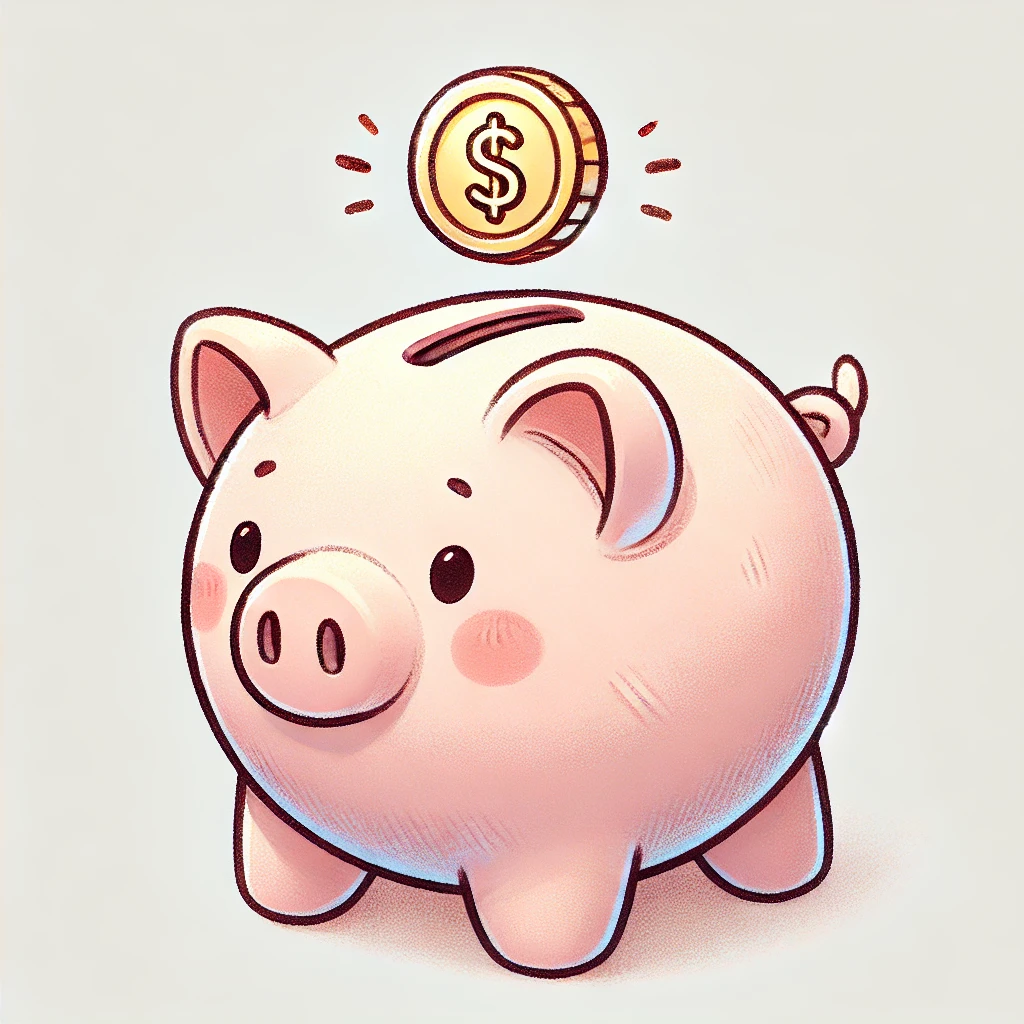
Hidden Website Costs No One Tells You About (Until It’s Too Late)
You’ve been quoted $5,000 for a “complete website.” Sounds fair, right? But a few weeks in, you get hit with surprises:
- “Oh, SEO’s not included.”
- “That booking form needs a plugin.”
- “You’ll have to supply all the content.”
- “Hosting? That’s another $900 a year.”
Suddenly, your $5K website is pushing $9K – and you’re wondering what went wrong.
Here’s the truth: a lot of agencies don’t intentionally hide costs – they just don’t tell you what’s missing. This section is your cheat sheet for spotting those blind spots in advance.
Content Creation (Because You Probably Don’t Want to Write It All Yourself)
The cost trap:
Many quotes assume you’ll provide 100% of the copy – written, formatted, and SEO-ready.
Why it matters:
Content is time-consuming and strategic. If you’re not a writer (or too busy to be one), this becomes a bottleneck. Worse still, placeholder content kills your SEO and user experience.
Typical content creation costs:
- Basic page copywriting (Varies on how many pages): $800 – $2,000+
- Brand messaging & tone of voice: $1,500 – $3,000+
- SEO blog/article writing: $250 – $500 per post
How to avoid it: Ask upfront: “Will you write or edit the content?” Better still, partner with a team like us who can provide SEO-focused copywriting aligned with your goals. Copy can be a serious struggle for time-lacking business owners over people who do this on the daily, and understand the website design structure.
SEO Setup (Because “Showing Up on Google” Isn’t Automatic)
The cost trap:
Many low-cost quotes include zero SEO setup – no meta tags, keyword planning, internal linking, or search intent strategy.
Why it matters:
If your site isn’t optimised for search, it’s invisible to most potential customers. Google needs structure, speed, and relevance to rank your site – and DIY sites often fall short here.
Common SEO “extras”:
- Keyword research & implementation: $500 – $2,000+
- Technical SEO audit: $300 – $1,000 (Want one for free? We do it here!)
- Local SEO & Google Business Profile setup & maintenance: $400 – $1,000
How to avoid it: Ask: “Is SEO included, and to what level?”
Image, Video, and Visual Content
The cost trap:
The quote says “design included” – but then you’re asked to source and provide all the imagery, videos, and logos.
Why it matters:
Low-quality visuals kill credibility. A blurry image or stocky video ruins trust faster than you can say “.jpg”. If you’re not providing brand assets, someone has to do it – and that adds cost.
What this can add:
- Stock image licensing: $200 – $500+
- Custom illustrations: $300 – $2,000+
- Brand photography or product shoots: $800 – $5,000+
- Video editing or animations: $500 – $3,000+
How to avoid it: Confirm what design assets are included. A top tip I give business owners all the time is take photos of everything you do! Include your staff as well. Just make sure they’re high-quality.

Plugin Licences and Integrations
The cost trap:
That booking form, gallery, or quote calculator? It might rely on a premium plugin – and they’re rarely free.
Why it matters:
Ongoing plugin fees can stack up, and if you don’t keep them updated, they become a security risk. Many “cheap” sites rely heavily on plugins to compensate for a lack of custom development – which adds code bloat and risk long-term.
Typical plugin costs:
- Booking plugin: $100 – $400/year
- Advanced form builder: $60 – $200/year
- SEO tools: $80 – $300/year
How to avoid it: Ask: “Are there any recurring plugin or licence fees?” Transparency here helps avoid post-launch surprises.
Revisions, Changes, and Scope Creep
The cost trap:
You thought you had “unlimited revisions” until you realise that only covers design, not content, layout changes, or functionality tweaks.
Why it matters:
Web design projects evolve. You might want new sections, restructured pages, or fresh copy halfway through. Many agencies will charge hourly or by the revision round.
Possible costs:
- Extra revision round: $100 – $500+
- Structural layout change: $300 – $1,000+
- Adding additional sections: $600 – $2000+
- Rewriting content mid-build: $500 – $2,000+
How to avoid it: Clarify how many revision rounds are included, what counts as a “revision” versus a “new request”, and when the revision rounds are done.
Hosting, Domains, and SSL Certificates
The cost trap:
The site’s done – but it’s not live. You still need a host, a domain, and security.
Why it matters:
Cheap hosting = slow websites. And a slow site = lower rankings, higher bounce rate, and lost leads.
Hosting costs in NZ:
- Shared hosting: $5 – $30/month (very basic and we wouldn’t recommend this at all)
- Dedicated/CDN hosting: $30 – $150+/month (high performance)
- Domain: $20 – $60/year
- SSL certificate (if not bundled): $50 – $150/year
How to avoid it: Get a break down of your providers hosting plans, what they include, and their performance.
Another thing to remember, if you’re not hosting with your web provider theres usually a cost to migrate your website to the host. Expect 1 to 2 hours for this at their hourly rate!
Ongoing Maintenance and Support
The cost trap:
Your site launches… and your dev disappears. Or worse – it breaks and there’s no one around to fix it.
Why it matters:
Websites are living systems. They need updates, security patches, backups, content tweaks, and ongoing care. Without maintenance, you’re rolling the dice on uptime and data protection.
Support packages usually include:
- CMS/plugin updates
- Bug fixes
- Content changes
- Analytics monitoring
- Priority & instance support
Typical costs: $100 – $500/month
How to avoid it: Make sure ongoing website maintenance is part of the plan – or have a retainer option post-launch.
Little warning: With the rise of A.I, we’re starting to see a lot of issues with web dev’s using A.I without actually understanding code. Sure, they can build and launch the website… but when it breaks they don’t have the understanding to fix it.
Generally this is the point where they ‘mysteriously’ disappear and whole websites have to be rebuilt. Just a warning!

Bottom Line: Ask the Right Questions
Most hidden costs aren’t sneaky – they just stem from unclear communication or cut corners.
Before you sign anything, ask:
- What’s included in content?
- Is SEO built-in?
- What platform are we using?
- Are there plugin or licence fees?
- What ongoing costs should I expect?
A quality partner won’t shy away from these questions – and won’t nickel-and-dime you for every extra request.
Next up, we’re shifting focus to return on your website investment – because now that you know what things cost, let’s talk about what you get back from a high-performing website.
Website ROI – What Are You Really Paying For?
Let’s be blunt: your website is not an expense. It’s a sales tool, a brand asset, and a growth engine – if it’s built right.
So instead of asking “How much will it cost?”, the smarter question is: “What return will I get from this website?”
Whether your goal is to generate leads, increase bookings, boost brand trust, or sell products – the right website pays for itself again and again. Here’s what you’re really investing in.
Lead Generation – 24/7
Your website never sleeps. Done properly, it becomes your best-performing salesperson – capturing enquiries, bookings, or purchases any time, day or night.
How it drives ROI:
- Well-placed CTAs guide users to conversion
- Clear forms and booking tools make action easy
- Integrated CRM systems automate follow-ups
Example:
A local accountant went from 2-3 form submissions a week to 12-15 after we redesigned their website with a focus on conversion flow and content clarity.
Building Trust and Credibility
In 2025, if you don’t have a strong digital presence you don’t exist in the eyes of many customers.
A substantial 81% of retail shoppers conduct online research prior to making a purchase. Whilst in the United States, 83% of shoppers who visited a physical store reported using online search before their in-store visit.
Your website is the first impression. And trust = conversions.
How design builds trust:
- Professional branding and UX/UI design
- Fast load speeds and mobile-friendliness
- Social proof (testimonials, reviews, case studies)
- Transparent navigation and contact info
Fact: 75% of users judge a business’s credibility based on its website design.
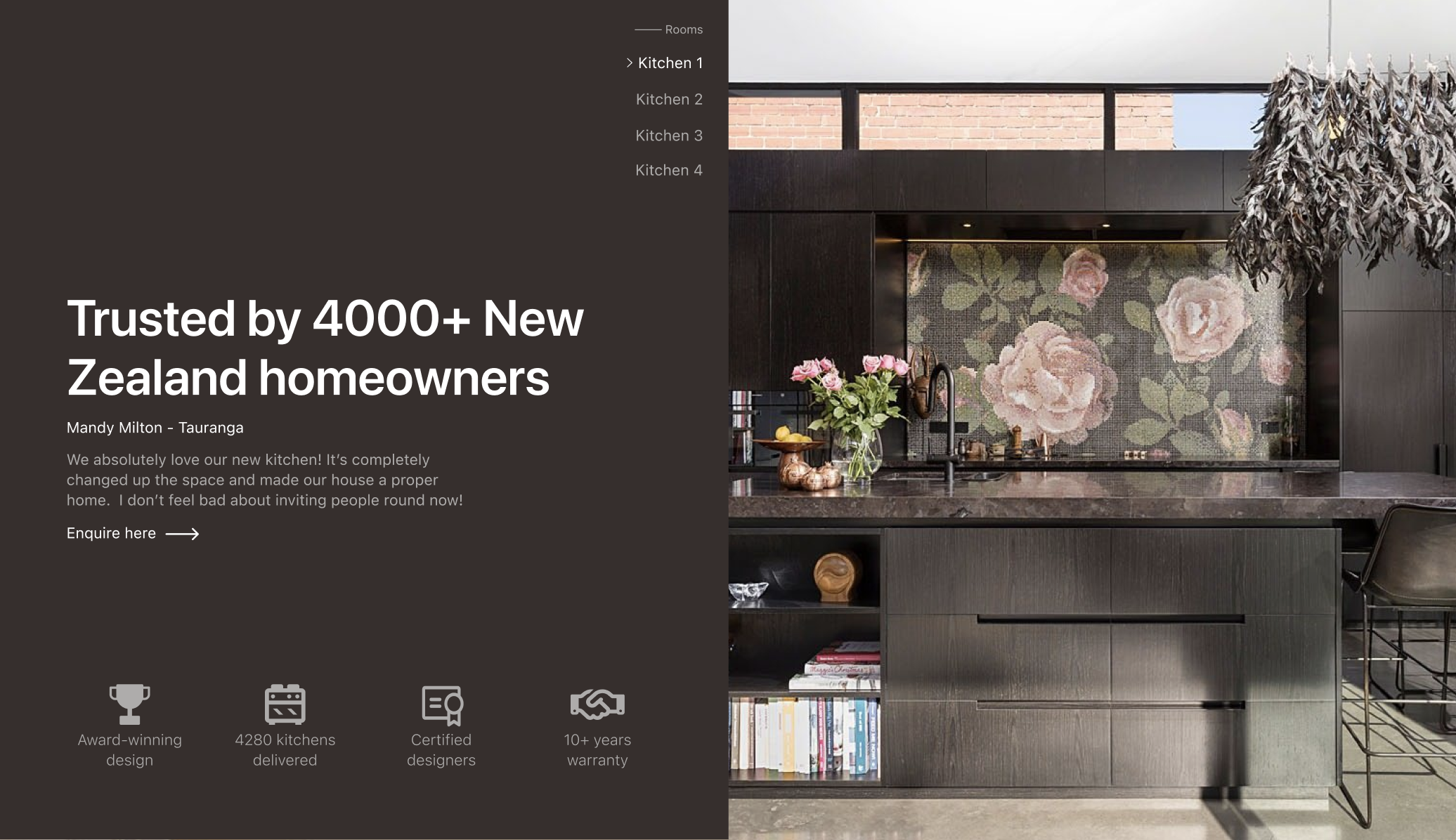
ROI Outcome: A polished site builds confidence and positions your business as the go-to in your industry.
Speed, Performance & User Experience
Time is money – especially online. Google data shows that 53% of users will abandon a site if it takes longer than 3 seconds to load.
Slow = lost sales.
What performance optimisation delivers:
- Faster load times = lower bounce rates
- Mobile-first design = wider accessibility
- Clean code = better SEO and rankings
That’s why we build lightning-fast websites using frameworks like Next.js and Tailwind for peak performance. Combine that with CDN hosting and you’re ready to fly.
ROI Outcome: More users stay, more users act – better conversions, better rankings.
Better SEO = More Visibility
A properly optimised website doesn’t just look good – it attracts more of the right people.
What SEO setup gives you:
- Higher rankings on Google for your core services
- Increased organic traffic (no ads needed)
- Local customer discovery through Google Business and maps
- Long-term traffic compounding month after month
Example:
We helped a NZ-based carbon accounting firm GreenMetrics launch their brand as an NZ first by increasing their organic search visibility through optimising content and keywords. They now get dozens of qualified leads without paid ads.
ROI Outcome: Sustainable traffic growth. Leads that come to you.
Reduced Admin & Operational Efficiency
A smart website reduces manual work and repetitive tasks – saving you time, money, and staff hours.
Automation features:
- Auto-replies & calendar booking
- Integrated contact forms to CRM
- File downloads (catalogues, brochures, pricing sheets)
- Live chat or support knowledge bases
- Customer portals or dashboards
Example:
A recruitment agency with a bespoke CMS saves 12+ admin hours a week by automating applicant intake, file uploads, and client tracking.
ROI Outcome: Streamlined operations. Happier staff. Lower overhead. Win!
Scalability for Future Growth
Too many businesses outgrow their websites in 12-18 months because they went for the cheapest option.
Why future proofing matters:
- Adding services, locations, or features is easy
- No need to rebuild when scaling
- Clean backends allow your team to update content independently
- Flexible CMS and modular frameworks handle growth without lag
A good agency builds with expansion in mind – so your site grows with your business.
ROI Outcome: One website that works today, and tomorrow.
Data & Insights That Drive Smarter Decisions
When your website is set up properly, it becomes a goldmine of user data and behaviour insights.
What this helps you understand:
- Which pages convert best
- Where users drop off
- What keywords are driving traffic
- How people are interacting with your offers
This data fuels smarter marketing, content strategy, and product/service decisions.
ROI Outcome: You don’t just guess what’s working. You know.
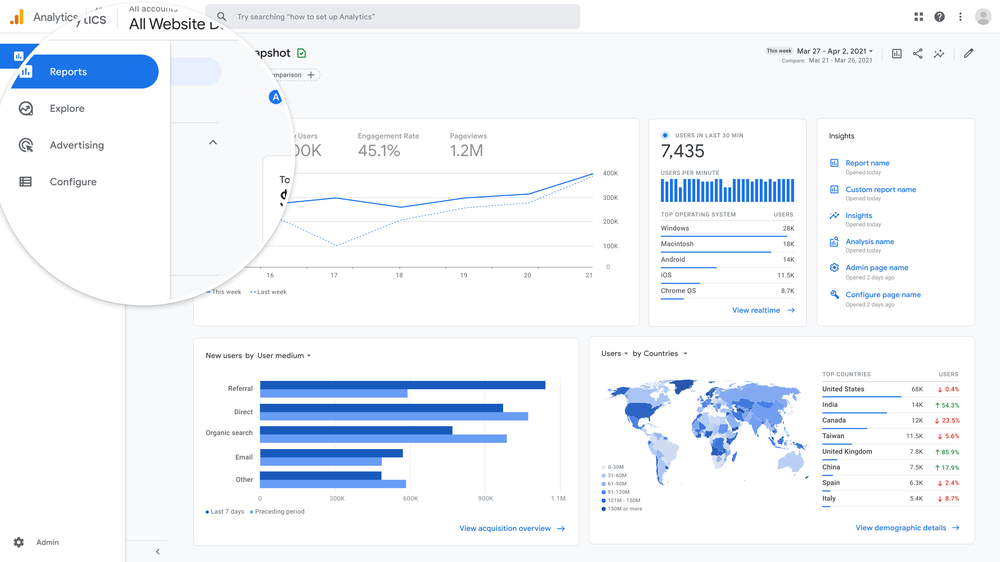
ROI Recap
You’re not paying for “a website.” You’re investing in:
More leads, more sales, more efficiency, more brand trust, more visibility, more scalability, (and finally…), and more insight.
Next up, we’ll bring this to life with real examples from real NZ businesses – showing what they spent, what they got, and how it worked.
Case Studies – Real Website Pricing Examples in NZ
It’s one thing to talk about pricing tiers and ROI in theory. But what does that look like in the real world?
Let’s explore 3 real website projects we’ve delivered at Builtflat – each at a different stage of complexity and price point. These case studies highlight the results, the requirements, and why the investment was worth it. We will however keep the exact cost confidential for our clients.
CASE STUDY 1: GreenMetrics – Carbon Accounting Firm Website
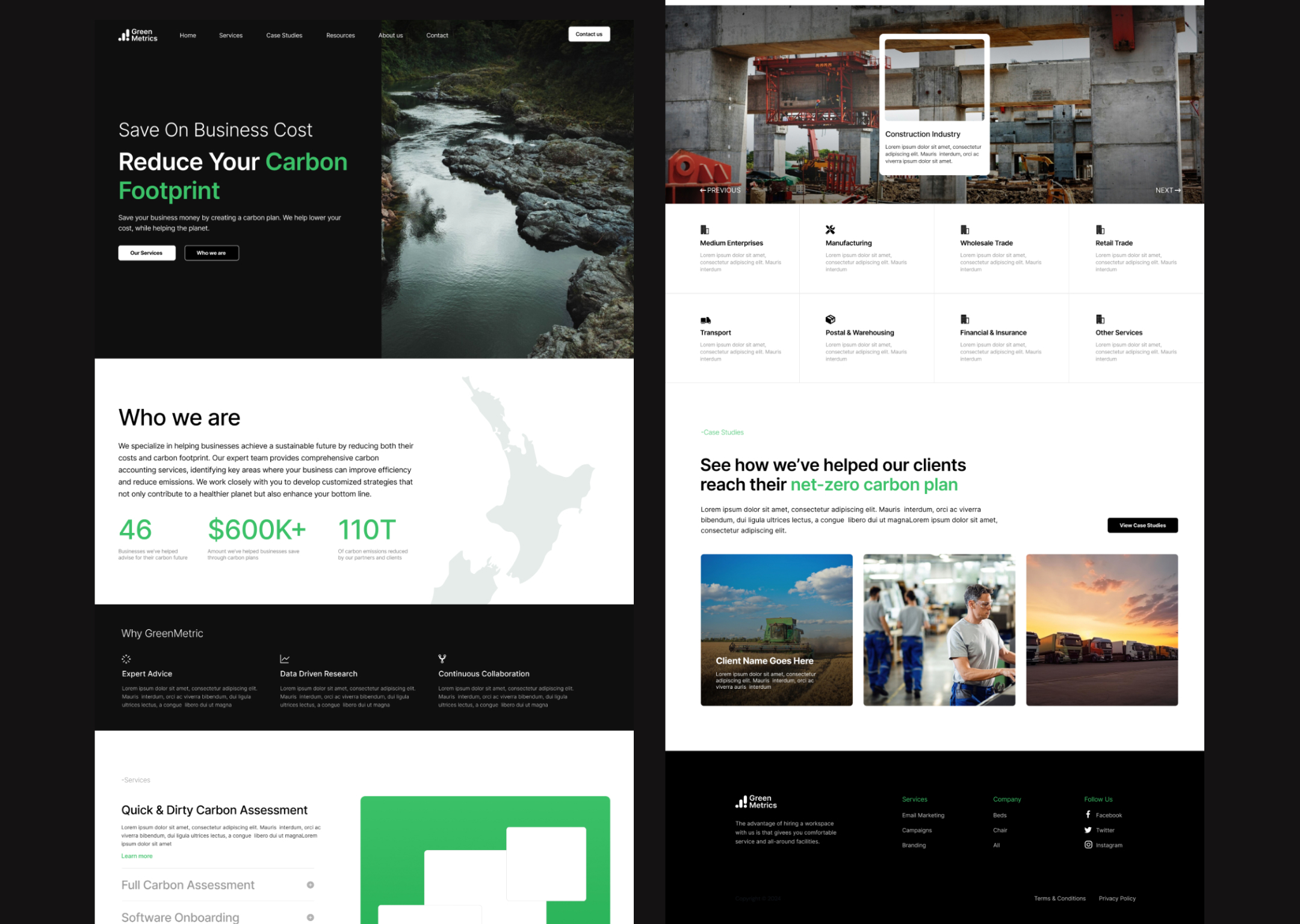
Investment: $6,000 to $12,000
Project Scope Overview: Custom design, advanced functionality, gated pricing, data collection, CRM integration and branding.
What They Needed:
GreenMetrics were launching New Zealand’s first carbon and sustainability accountant firm and needed a full brand presence to match. With the mission of helping kiwi businesses with ever-growing regulation and with no brand or website in place they needed design, strategy, and growth enablement – fast.
What We Delivered:
- Full custom UX/UI design with bespoke branding
- Responsive website NZ built with a headless WordPress setup
- Gated pricing page (users submit a form to unlock tailored pricing)
- Integrated ClickFunnels CRM to capture and segment leads
- SEO-focused content & metadata
- Blog and resource centre for content marketing
- Clean navigation, video headers, and modular content blocks
Why It Worked:
The gated pricing page helped qualify leads before engagement, filtering out tyre-kickers. Since launch, GreenMetrics has:
- Grown inbound leads
- Created a repeatable sales funnel via the website
- Built a platform to support their NZ-wide launch
This is a perfect example of investing in strategy-first design that can scale with the business.
CASE STUDY 2: CSSBuy – Global Procurement & Logistics Platform

Investment: $10,000 to $20,000
Scope: Full UI/UX website design & mobile application design
What They Needed:
CSSBuy is a global logistics eCommerce platform focused on procurement and shipping out of China. With thousands of international users they came to us with a clunky, outdated design that clarity, a great user experience, and mobile usability – a problem for a product-heavy, high-traffic business.
What We Delivered:
- Complete UI/UX overhaul with a focus on clarity & ease of use
- Desktop & mobile website design
- Highly functional and sleek Mobile application design
- Over 100+ custom designed pages
Why It Worked:
The old site was holding them back. After launch:
- User sessions increased in duration
- Global conversions improved
- CSSBuy’s monthly visitors went from around 15k to over 140k per month over 2 years.
This is a great example of a custom design can help influence user satisfaction.
CASE STUDY 3: Kelly’s Garden Centre – eCommerce with Affordable Impact

Investment: $5,000 – $10,000
Hybrid Custom/Template website + brand alignment + local SEO
What They Needed:
Kelly’s Garden Centre is a much-loved online garden store who sold everything from bushes to trees – and even doing custom landscaping. Their old website was outdated, not mobile-friendly, and didn’t reflect the personality of their brand or team. They needed something simple, modern, and welcoming – and on a modest budget.
What We Delivered:
- Built using our affordable template-driven design
- Modern refresh aligned to their brand
- Mobile-first performance with a simplified structure
- SEO optimisation for “garden centre + location” searches through content suggestions
- Customisable CMS so they could update products and events
Why It Worked:
The site reflects who they are – sleek design to reflect their boutique landscaping. As well as improving the user experience, positively influencing user purchasing.
This is proof that you don’t need a $20K budget to have a website that works – just the right partner and a clear goal.
What These Examples Prove
Each of these businesses had different goals and different price points – but they all invested in a website that worked for them.
They didn’t just buy “pages” or “templates”…
They invested in:
- Systems that save time
- Experiences that convert
- Designs that inspire trust
- SEO that drives traffic
And because of that, they’re seeing real, measurable results.
Want something similar? Check out our case studies or book a website assessment to get started.
How to Avoid Overpaying (or Underinvesting)
When it comes to web design, most people worry about paying too much.
But here’s the truth: Many businesses underinvest, pick the wrong web agencies, try to do it on the cheap, or don’t invest time or capital into their website… and pay for it later in lost leads, poor performance, and expensive rebuilds.
So how do you strike the right balance?
Here’s how to avoid being burnt on either side of the pricing scale – and ensure your money goes exactly where it delivers results.
Don’t Be Fooled by Super-Low Quotes
We get it – everyone has a mate who can do it cheaper and that $999 website sounds tempting. But if it seems too good to be true, it usually is.
The risk with low-cost sites:
- They’re often built with bloated themes or outdated templates
- No strategy, no SEO, no user experience focus
- No scalability – once you outgrow it, you’ll need a rebuild
- Hidden costs for anything outside the “basic package”
The kicker? You’ll likely pay again in 12-18 months when it no longer serves your business.
Tip: Always ask, “What’s not included?” and “How will this scale with my business?”
Avoid Paying for Fluff You Don’t Need (At Least Yet)
On the flip side, don’t get talked into enterprise-level features if you’re just starting out.
Examples of overkill:
- Complex dashboards or member portals you don’t need yet
- Headless CMS setups when a standard CMS will do
- Animation-heavy websites with little content or traffic
It’s like buying a Ferrari before you’ve got your licence.
Tip: Focus on what you need right now with a clear roadmap for future features.
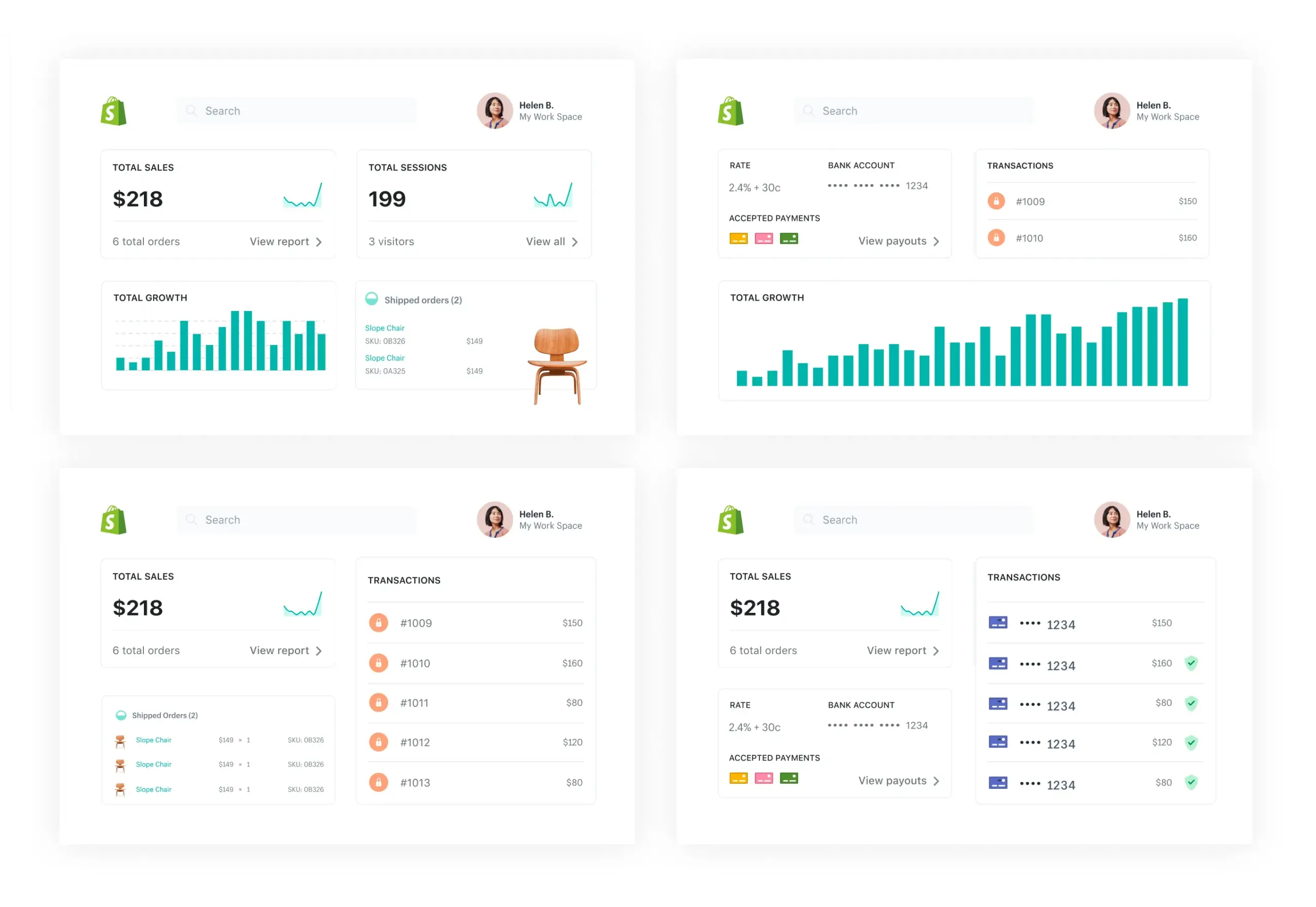
Get a Detailed, Itemised Quote (Not Just a Total)
Vague quotes like “Website – $7,000” don’t help anyone.
A good quote should break down:
- Design scope
- Number of pages
- CMS or tech stack
- Content strategy
- Integrations (e.g. booking, eCommerce, CRM)
- Hosting, maintenance, and SEO
- Project timeline
Tip: Ask for a clear scope, pricing breakdown, and get them to walk you through it – so you know exactly what you’re paying for and what’s left out.
If that’s too hard, they can’t explain it, or they’re hesitant – Run Forest, run!
Align the Website to Your Business Goals
A pretty website isn’t the goal – growth is.
Always ask: What do I want this website to do?
Examples of outcomes to build towards:
- Increase bookings
- Streamline sales process
- Improve mobile usability
- Reduce admin time
- Attract new customers via SEO
- Better brand visibility
When your website is tied to outcomes, you’ll make smarter decisions about where to invest.
Tip: We always kick off with a strategy session to uncover why you’re building – not just what you want to build.
Plan for the Long Term (Not Just Launch Day)
The real work starts after your website goes live.
If you don’t factor in updates, maintenance, SEO improvements, and performance monitoring, things can get stale – fast.
Questions to ask:
- What happens post-launch?
- Do I get support or am I on my own?
- Can I easily edit the content myself?
- What does the maintenance plan look like?
- What can I do to keep my website performing?
Tip: Choose a partner who offers structured post-launch support – or you’ll be Googling “how to fix my broken WordPress site” at midnight.
Look for Transparent, Strategy-First Partners
The best web teams aren’t just coders – they’re consultants who want to see your business grow.
Warning signs to avoid:
- No discovery session or strategy phase
- Confusing jargon or vague answers
- Pressure to sign without understanding deliverables
- No portfolio or case studies
Green flags:
- Clarity in quoting and process
- Past projects with proven results
- Willingness to push back on what won’t work
- A plan for after the website goes live
👉 Tip: Look for clear quoting, strategic input, and long-term partnerships – not just one-off builds. Better yet, look for a team who can deliver all disciplines of web services. They’ll usually have must more to offer your website strategically.
Recap: Be Smart With Your Budget
Avoid overpaying by knowing what you actually need. Avoid underinvesting by understanding what your website needs to perform.
The right spend = the right results.

What to Expect from a Transparent Web Partner
Choosing a web design partner isn’t just about the price tag – it’s about trust, communication, and results.
When you’re investing thousands into your website, you want to know you’re not just buying pixels – you’re building a partnership with people who actually give a damn about your business.
Here’s what to look for in a web design team that’s worth every cent.
A Strategy-First Approach (Not Just “What Pages Do You Want?”)
Most agencies jump straight into design. At Builtflat, we don’t start designing until we’ve had a strategy meeting.
What this looks like:
- A clear discovery session to understand your goals
- Recommendations based on audience, competitors, and trends
- Wireframes and user journey mapping before anything gets built
Why it matters: You get a site that’s aligned with your outcomes – not just a list of features that look good but don’t perform.
Don’t get ‘wowed’ into a deal by pretty designs right out the gate!
Clear, Itemised Proposals (No Guesswork, No Grey Areas)
We’ve all seen it – the vague PDF quote with one line: “Website – $6,500” That’s not clarity. That’s a gamble.
Our process includes:
- Full breakdown of scope, timeline, and deliverables
- List of what’s included and what’s not
- Pricing structured by outcome, not fluff
Why it matters: No nasty surprises. No hidden costs. Just full transparency from day one.
Responsive Communication (No Vanishing Acts)
The number one complaint from businesses working with web agencies? “They just disappeared after the deposit.”
Want to hear the worst we’ve heard..? A client paid upwards of 40k for an agency to ‘forget’ about them for 6 months. You should alway be kept in the loop – whether it’s strategy check-ins, weekly updates, or mid-project pivots.
Expect:
- Fast turnaround on replies
- Shared project dashboards
- Transparent progress updates
- A real human on the other end of the call (hi 👋)
Why it matters: Your business doesn’t pause – and neither should your agency.
Flexible, Scalable Solutions (We Build With Growth in Mind)
Cheap sites break when you grow. Websites should evolve with you.
What this looks like:
- Modular builds you can expand later
- Content blocks that let you edit, add, or repurpose pages without code
- Flexible CMS options (WordPress, Headless, Shopify)
- Custom functionality added when you’re ready – not all at once
Why it matters: You get a site that works now and scales later, without the rebuild price tag.
Industry-Specific Knowledge (We’ve Done This Before)
To name a few, we’ve built sites for:
- SaaS, eCommerce and software platforms
- Accountants
- Trades and builders
- Tourism and service-based businesses
- Government and NGO-backed initiatives
- Real Estate
- Recruitment and HR
That means we bring industry context to your build – from compliance requirements to customer psychology.
Why it matters: You don’t need to explain everything. We get it – and we build accordingly.
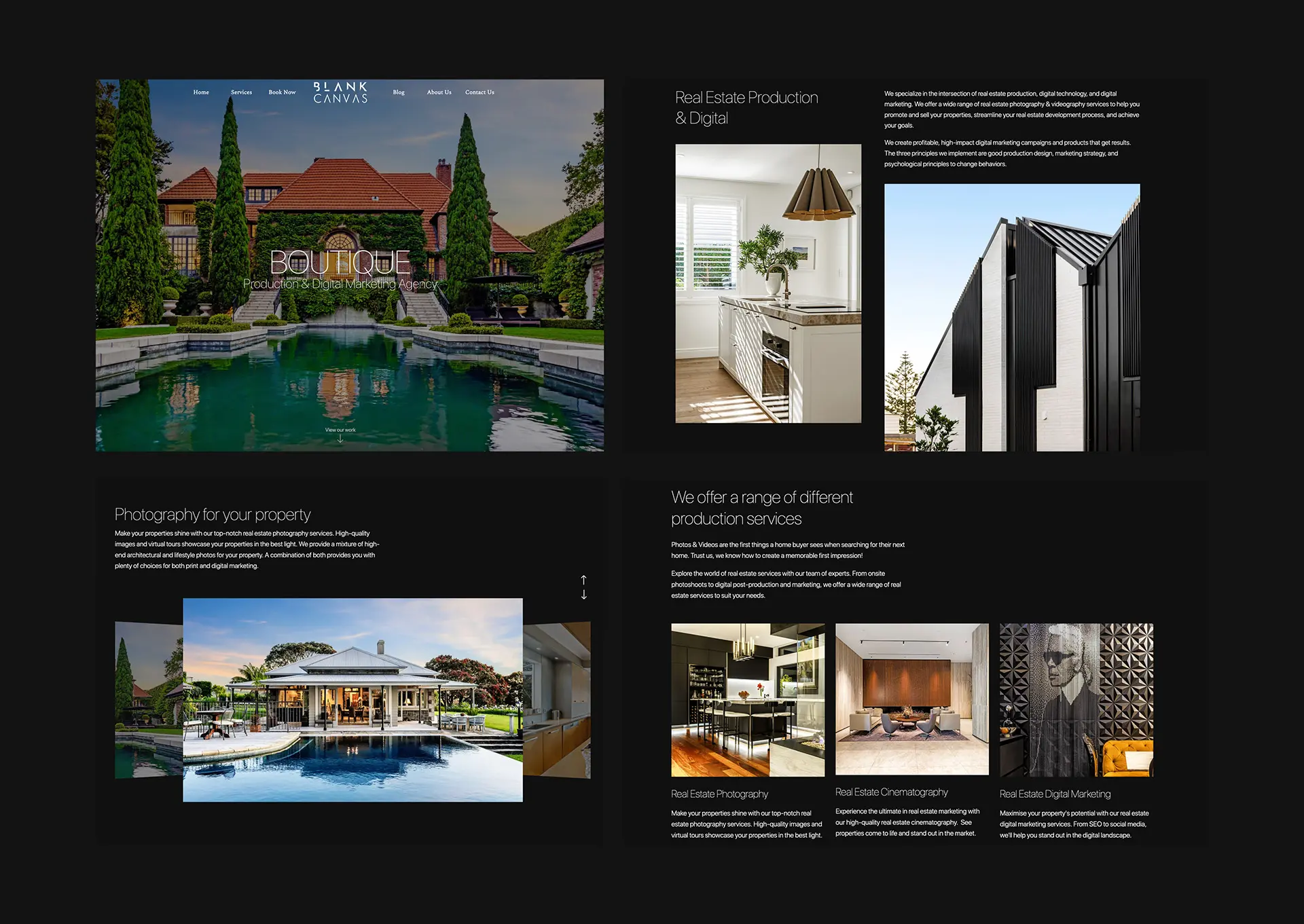
Long-Term Support (Not Just a Launch-and-Leave Job)
Your website isn’t “done” the day it goes live. That’s when it really begins.
Your agency should offer:
- Post-launch support and edits
- Performance monitoring
- Hosting, backups, and updates
- SEO & content improvement plans
- Ongoing dev support as needed
Why it matters: You’re not left in the dark – you have someone in your corner as your business evolves.
A Proven Track Record
Cheeky self-promotion here: I’m using Builtflat as a template for this article so if you need a hand, reach out! Oh, you don’t just have to take our word for it – our work speaks for itself.
Hear it directly from our clients:
“Builtflat are a true asset to our business… they add a huge amount of value to us and our clients.” – Richard Kerby, Port Group
“They were helpful and made us feel included right the way through.” – Tua, CV Compton
“We are very happy with the website and have some great feedback on it and have enjoyed working with you and Jerry.” – Warwick Russell, GreenMetrics
Why it matters: When you work with us you’re not just getting a website. You’re getting a results-focused partner with real skin in the game. We’re not interesting in just pushing out websites, we’re interested in results!
Final Thoughts – Website Pricing Doesn’t Have to Be Confusing
By now, you know what most business owners don’t:
- What a website actually costs in New Zealand
- What affects pricing (and what’s worth paying for)
- Where most people go wrong (and how to avoid it)
- How to make sure your site is a powerful growth asset – not just an online placeholder
Whether you’re starting from scratch, rebuilding an old site, or scaling a fast-growing brand – your website is an investment in how the world sees your business.
And if you want it done properly, strategically, and with zero BS…
Let’s Talk About Your Website
We build websites that don’t just look good – they perform.
Book your free website assessment
Or contact the Builtflat team today
Let’s build something that works!
Frequently Asked Questions
Below are some frequently asked questions relating to this blog post.